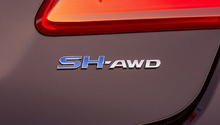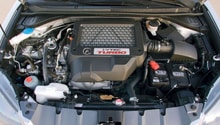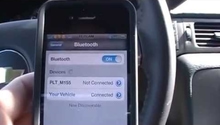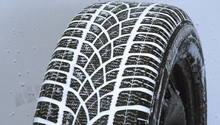Acura RDX: Model Specifications
Knowing the general model specifications of the Acura RDX can help you choose a specific year and model. Whether you're buying new or used, you may find that there are certain features you can't go without, or that you really don't need to spend more for features that you'll never really use.
This article applies to the Acura RDX (2007-Present).
The difference between a 2WD and 4WD are the added components on the latter including front axles, front differential, a second driveshaft, transfer case, and the 4WD switch or lever inside the cab. When in 2WD, the front axles are unlocked, this means they aren't connected to the drive line and thus are receiving no power from the drive train. As soon as you switch into 4WD, the front axles lock electronically and they will begin to receive power. This benefits you because now not only do you have two extra tires helping you move, but also those two extra tires are receiving the engine weight to help them gain traction. The major difference you'll notice while in 4WD is that you won't have as large of a turning radius due to the CV axles being locked in.
Component Breakdown
Overview
The Acura RDX is an entry-level compact crossover SUV. Since its introduction in 2007, the RDX has remained a favorite among drivers seeking a reliable and affordable luxury SUV. The first generation RDX, which was on the market from 2007 to 2012, featured a facelifted 2010 model and available all-wheel drive. The second generation RDX was introduced to the public in 2013 and includes a recently refreshed 2016 model. The latest version is also available with all-wheel drive and features a turbocharged four-cylinder engine.

Model Specifications
(Acura RDX Gen 1 and Gen 2)
The RDX is in a select group of being one of Honda's very few turbocharged gasoline engines. It is also the only four-cylinder luxury SUV on the market. Due to the turbo powered engine, there are respectable mileage ratings while also delivering enough performance to get you around town more than adequately. The engine also features a top mounted inter-cooler, which receives air from the grille and is channeled by ducting air under the hood.
The RDX comes with F1 inspired paddles that allow for manual shift capability mounted on the steering wheel. The Sport (S) setting has higher shift points and quicker downshifts to give you a more thrilling ride experience. The Super Handling All-Wheel Drive (SH-AWD) will allow the RDX while taking a curve to activate the magnetic flux clutches in the rear differential can transfer as much as 100% of the available rear torque to the outside wheel. That torque transfer, joined with a 1.7% rear over-rotation of the rear wheel, helps the RDX carve its way through the turn.
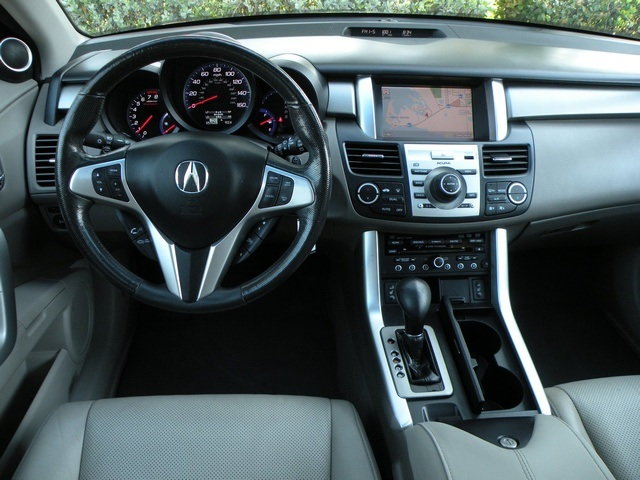
The RDX will seat five comfortably and comes standard with many creature comforts that people have come to expect in a luxury vehicle. In 2007, Acura offered an iPod adapter for the RDX which was wired into the glove box and allowed the iPod to be controlled through the sound system interface. However, as of model year 2008, the iPod music link has been discontinued due to Honda/Acura hardware incompatibilities. 2010+ models come standard with a USB connection for use with Apple products and USB storage devices such as MP3, WMA6, and AAC music files in the center console.
The RDX is the second Acura vehicle to feature the Advanced Compatibility Engineering (ACE) body structure. ACE absorbs energy from an impact and transfer it throughout the body of the vehicle in order to minimize massive damage to the impact area keeping the occupants safer. The front airbags use a dual-threshold, dual-stage technology that can adjust the timing and speed of each airbag deployment depending on the severity of impact. The front seats have active head restraints and the seat belts are quipped with pre-tensioners and force-limiters. The institute for Highway Safety gave the RDX a rating of Good for moderate overlap front test and side impact test.
Model Year |
Engine |
Transmission |
MPG (Est.) |
Drive Train |
Features |
|---|---|---|---|---|---|
| 2007 | 2.3L 4 cyl. | 5-speed automatic | 17/22 | FWD/AWD | Bluetooth, heated seats |
| 2008 | 3.7L V6 | 5-speed automatic | 15/20 | FWD/AWD | Bluetooth, heated seats |
| 2009 | 3.7L V6 | 5-speed automatic | 15/20 | FWD/AWD | Bluetooth, heated seats |
| 2010 | 3.7L V6 | 5-speed automatic | 16/21 | FWD/AWD | Bluetooth, heated seats |
| 2011 | 3.7L V6 | 5-speed automatic | 16/21 | FWD/AWD | Bluetooth, heated seats, USB audio interface, rearview camera |
| 2012 | 3.7L V6 | 5-speed automatic | 16/21 | FWD/AWD | Bluetooth, heated seats, USB audio interface, rearview camera |
| 2013 | 3.5L V6 | 6-speed automatic | 16/21 | FWD/AWD | Bluetooth, heated seats, USB audio interface, rearview camera |
| 2014 | 3.5L V6 | 6-speed automatic | 20/28 | FWD/AWD | Bluetooth, heated seats, USB audio interface, rearview camera, 5-inch color center information display |
| 2015 | 3.5L V6 | 6-speed automatic | 20/28 | FWD/AWD | Bluetooth, heated seats, USB audio interface, rearview camera, 5-inch color center information display |
| 2016 | 3.5L V6 | 6-speed automatic | 20/28 | FWD/AWD | Bluetooth, heated seats, Siri Eyes Free, power tailgate, LED headlights |
Scheduled Maintenance
Newer model RDX vehicles are equipped with a Maintenance Minder system to determine when to change the oil and perform other maintenance. Instead of following a specific schedule, such as an oil change every 10,000 miles, the vehicle will alert when it's ready for an oil change.
(Related Article: General Information and Recommended Maintenance Schedule - AcuraZine.com)
Related Sites
- 2016 Acura RDX - Edmunds.com
- 2007 Acura RDX SUV - Edmunds.com
- 2013 Acura RDX SUV - Edmunds.com
- Acura RDX Comparison - Acura.com

